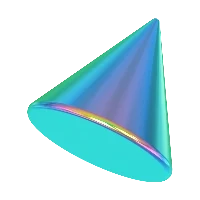
Time to Leave the Nest: Migrating from Google Earth Engine
Posted on October 5, 2024
3 minutes
Hey there, GIS enthusiasts and Earth observation aficionados! 👋 Today, we're diving into a topic that's been buzzing in our community: migrating from Google Earth Engine (GEE). Buckle up, because this journey is about to get as exciting as finding a bug-free code on the first try!
GEE: The Training Wheels of Geospatial Analysis
Don't get us wrong – Google Earth Engine is fantastic! It's like the comfy pajamas of the geospatial world. Perfect for lounging around... er, I mean, perfect for Minimum Viable Products (MVPs) and initial research. But just like those pajamas, you might not want to wear them to a black-tie event.
Let's break down why you might want to spread your wings:
1. Free... but at What Cost? 💸
GEE is free only for non-commercial, non-production use.
- Great for academic projects and initial testing
- Not so great when you want to monetize your brilliant idea
- Imagine building the next big thing, only to realize you can't actually sell it. Ouch!
2. Data Limitations: The "Free Buffet" Problem 🍽️
GEE uses only the freely available data
- It's like a free buffet – tasty, but limited
- What if your secret sauce needs that premium, high-resolution imagery?
- You might be missing out on the filet mignon of satellite data!
3. The Black Box Conundrum 🎭
Lots of algorithms used are also non-transparent
- It's like using a magic wand – cool, but you don't know how it works
- Lack of transparency can be a deal-breaker for many industries
- What if your clients start asking questions you can't answer? Awkward!
The Great Migration: From GEE to Python Paradise 🐍
Now, I know what you're thinking: "But GEE is so easy! How will I ever survive without it?" Fear not, brave geospatial explorer! This is where the real adventure begins.
Migrating from GEE to raw Python is like trading your tricycle for a mountain bike. Sure, there might be a few scraped knees along the way, but oh, the places you'll go!
Benefits of Migrating:
- Full Control: Tweak every pixel to your heart's content
- Scalability: From local machines to massive cloud clusters, the sky's the limit
- Integration: Play nice with other tools in your tech stack
- Transparency: Understand (and explain) every step of your analysis
But How Do I Start This Perilous Journey? 🧭
Ah, we thought you'd never ask! This is where your friendly neighborhood geospatial ninjas at Rotten Grapes come in.
We're here to turn your GEE scripts into blazing-fast, infinitely scalable Python code faster than you can say "spatial autocorrelation"!
Our team of experts will:
- Analyze your GEE workflows
- Translate them into efficient Python code
- Optimize for performance and scalability
- Provide documentation that even your grandma could understand (if she's into geospatial analysis, that is)
Ready to Spread Your Geospatial Wings? 🦅
Don't let GEE limitations clip your wings. It's time to soar into the world of limitless possibilities with custom Python solutions!
🚀 Schedule a call with our migration maestros and let's turn your GEE dreams into Python-powered reality!
Remember, in the world of geospatial analysis, the early bird gets the... well, the early bird gets the high-resolution satellite imagery before everyone else. So don't wait!
P.S. No Google Earth Engines were harmed in the writing of this blog post. We still love you, GEE, but sometimes, it's just time to move on to bigger pastures. Or should we say, bigger rasters? 😉













